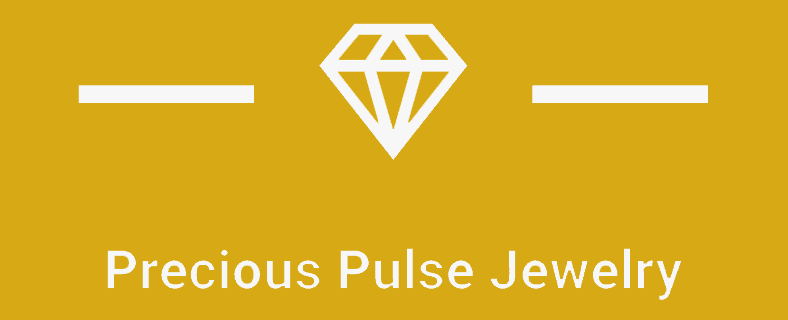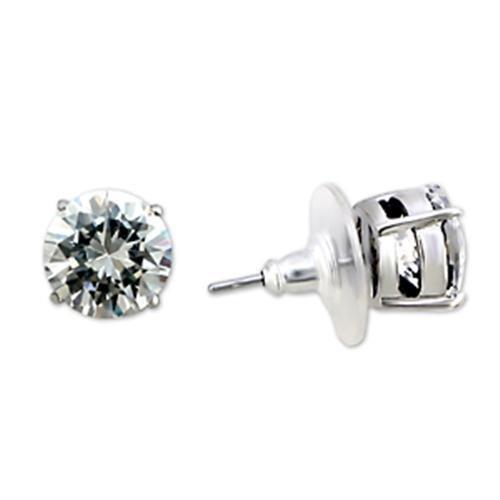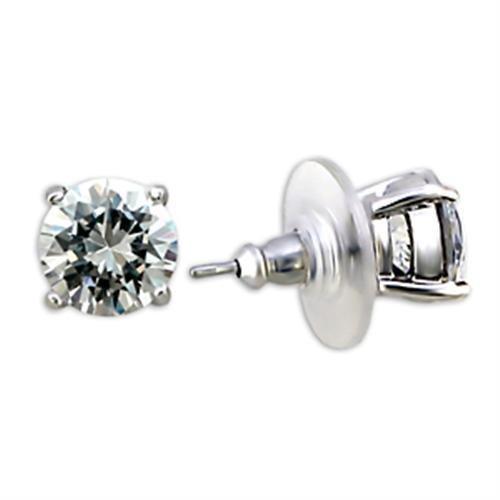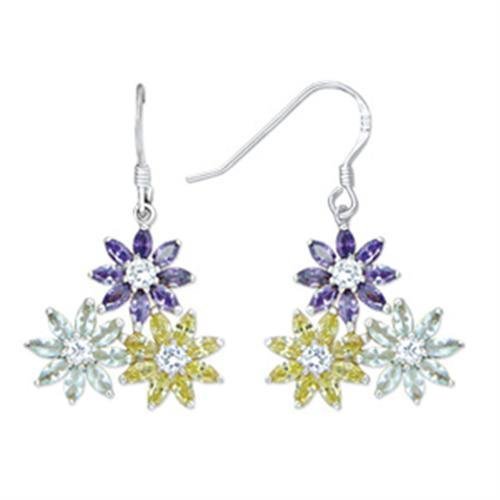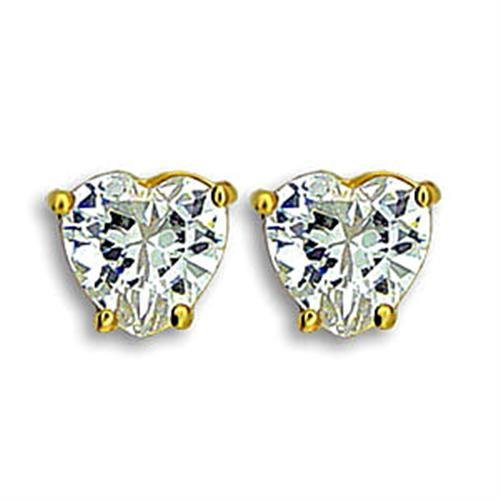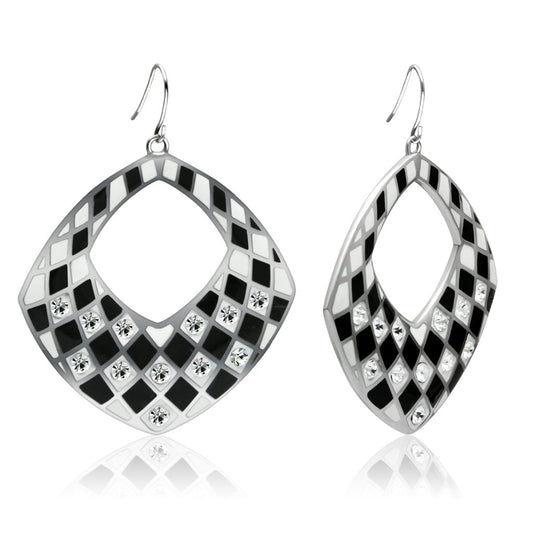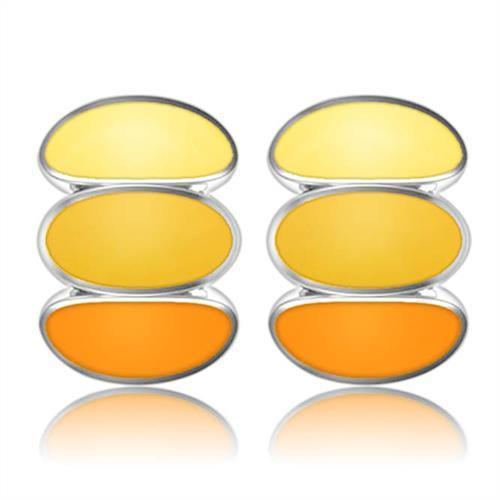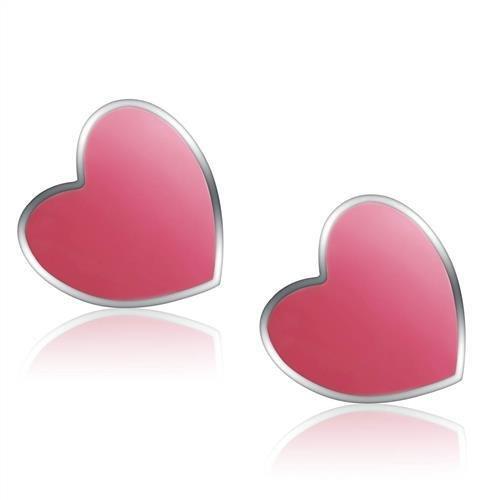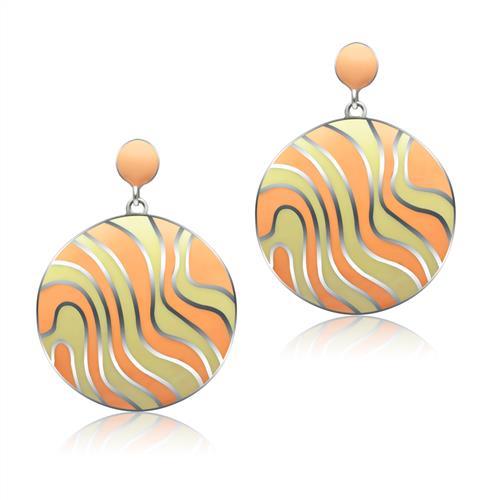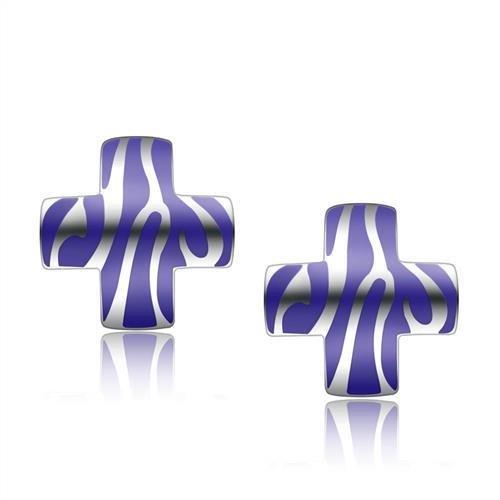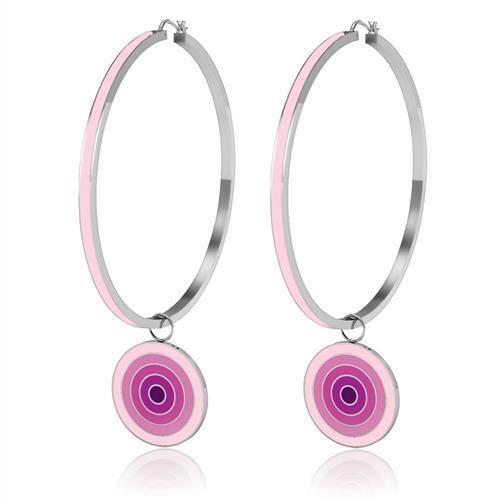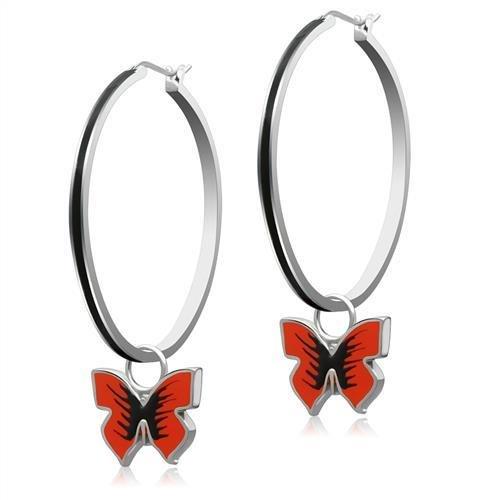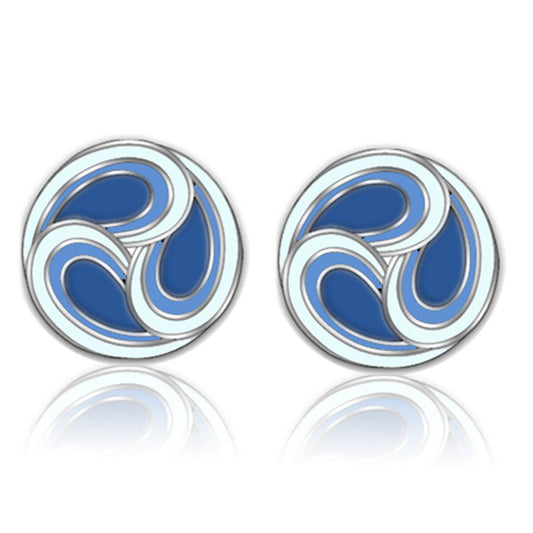When you're trying to figure out the difference between a wedding ring vs engagement ring, it really boils down to two things: timing and purpose. Think of it this way: the engagement ring is given when you pop the question, symbolizing the promise to marry. The wedding ring, on the other hand, is exchanged during the ceremony, sealing that promise and representing an official, lifelong bond.
Understanding the Core Differences
At its heart, the distinction between an engagement ring and a wedding ring is all about their unique roles in a couple's journey toward marriage. One is the beautiful promise; the other is the lasting commitment. Getting this difference helps you appreciate the tradition behind each and choose pieces that truly feel like you.
The engagement ring is almost always the showstopper. It’s the more elaborate of the two, usually built around a stunning center stone like a diamond. It’s designed to be a statement piece that proudly announces your engagement to the world.
A wedding band, in contrast, is typically much simpler. Its design is meant for everyday comfort and continuous wear long after the "I do's." For many people, the two rings are chosen specifically to be worn together, creating a beautiful and complementary set.
Quick Comparison of Wedding and Engagement Rings
To really see how they stack up, this table cuts straight to the chase, breaking down the main attributes of each ring.
| Attribute | Engagement Ring | Wedding Ring |
|---|---|---|
| Primary Purpose | A symbol of the proposal and the promise to get married. | A symbol of the official marriage bond, exchanged at the wedding. |
| When It's Given | During the proposal, well before the wedding day. | During the actual wedding ceremony. |
| Typical Design | Usually features a prominent center gemstone or other elaborate details. | Generally a simpler band, which may or may not have smaller stones. |
| How It's Worn | On the left ring finger; often moved to the right hand during the ceremony. | On the left ring finger, traditionally placed closest to the heart. |
This clear distinction helps couples make informed choices, but it's also big business. The global market for both rings combined was a staggering $66 billion back in 2018 and is expected to hit $107 billion by 2027. That kind of growth really underscores just how important these symbols of commitment are in cultures all over the world.
"Think of the engagement ring as the question and the wedding ring as the answer. One is a beautiful promise for the future, while the other is the lasting, everyday result of that promise."
This infographic does a great job of visually breaking down the purpose, timing, and design of each ring.
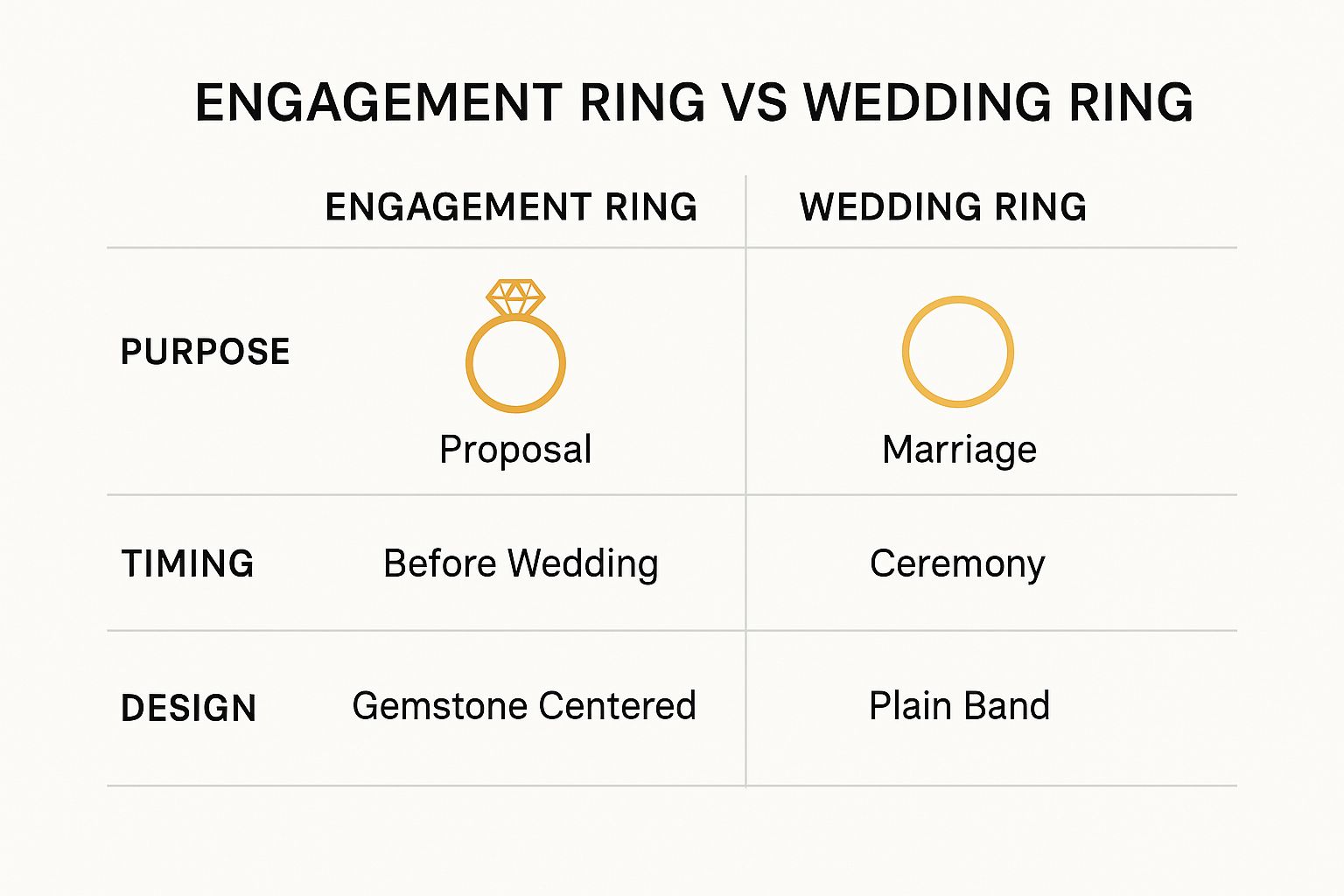
As the chart shows, the engagement ring is a pre-marriage symbol centered on a beautiful gemstone, while the wedding ring is a ceremonial band that signifies the marriage itself. This visual makes the whole wedding ring vs engagement ring conversation much simpler and their separate roles easier to understand.
While these rings have different functions, you can learn more about how a diamond engagement ring compares to a wedding band in our more detailed guide.
Exploring Ring Symbolism and Modern Traditions
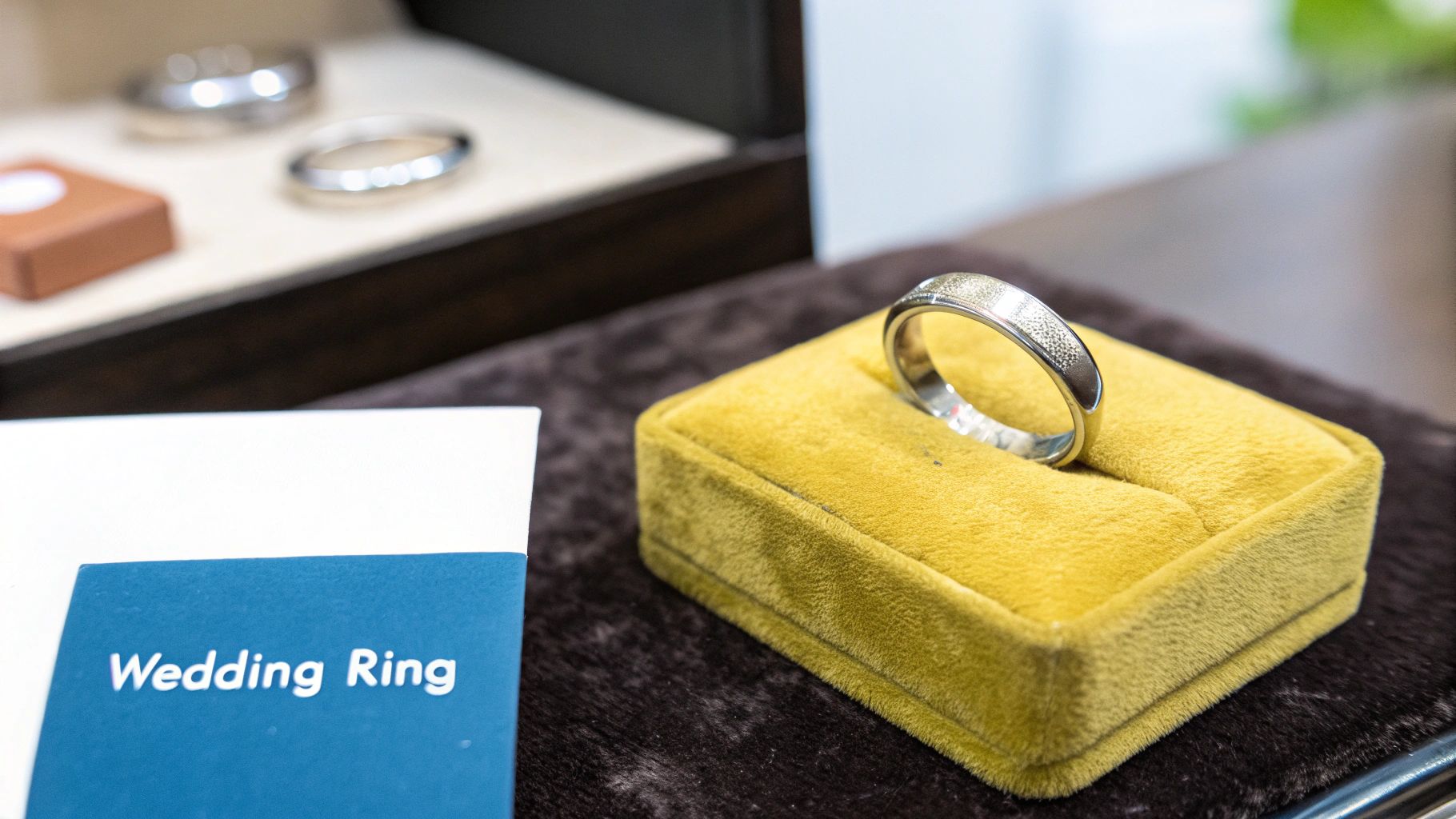
Sure, their designs are different, but the real heart of the wedding ring vs engagement ring debate is what they symbolize. Each ring tells a different part of a couple's story, weaving together traditions that are centuries old with the way we love today. Getting to know these meanings makes choosing your rings feel that much more significant.
The engagement ring’s roots trace back to ancient Rome, where it started as a betrothal ring—less of a romantic gesture and more of a public pledge and symbol of ownership. Over centuries, that evolved. Now, it’s a declaration of intent, a promise for the future, and a beautiful, tangible question mark.
On the other hand, the wedding ring is the fulfillment of that promise. Its simple, unbroken circle is a powerful symbol of eternity, wholeness, and the unending love you share. When you exchange them during your ceremony, they become the definitive, public emblem of your marriage.
The Engagement Ring: A Symbol of Promise
The engagement ring is all about looking forward. It captures a single, unforgettable moment—the proposal—and kicks off the exciting period of planning what’s next. It’s a way of telling the world, "I'm taken," and that you’ve both committed to building a future together. The prominent gemstone is traditionally meant to reflect just how bright and significant that promise is.
This tradition has become a massive cultural touchstone, especially in Western countries. The diamond engagement ring market in the U.S. and Canada was valued at a staggering $28.6 billion in 2019, with projections aiming for $39.7 billion by 2027. This isn’t surprising when you consider that over 70% of brides-to-be in the U.S. receive diamond engagement rings. It's a stark contrast to places like Japan, where the tradition is less common but steadily growing. You can dive deeper into these fascinating global engagement ring preferences to see how culture shapes these choices.
The Wedding Ring: A Symbol of Eternity
The wedding ring is a far more intimate symbol. It’s designed for daily wear, a constant, quiet reminder of the vows you made. Legend has it that the tradition of wearing it on the left ring finger comes from the ancient belief in the vena amoris, or "vein of love," which was thought to run directly from that finger to the heart.
The engagement ring marks a destination—marriage. The wedding ring signifies you have arrived and are now on a new, lifelong journey together. It’s the difference between a promise made and a promise kept.
These days, couples are making these traditions their own. Some choose perfectly matching wedding bands to symbolize their unity, while others pick distinct styles that celebrate their individual personalities within the partnership. This modern flexibility means you get to decide which symbols and traditions truly represent your unique love story, creating a narrative that’s all yours.
Comparing Popular Ring Designs and Styles
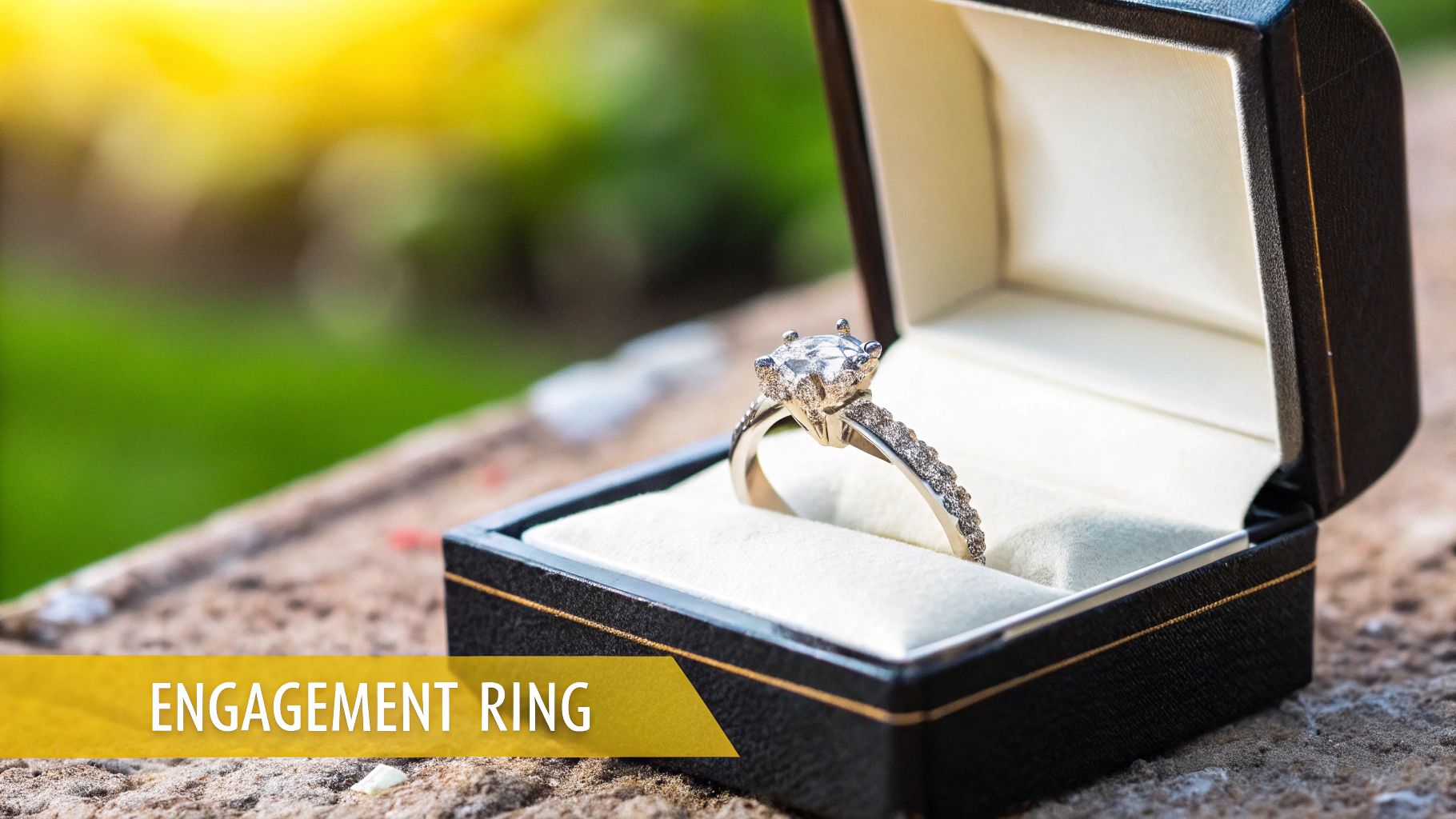
When you compare a wedding ring vs an engagement ring, the most striking differences are almost always visual. Think of the engagement ring as the headliner—it’s designed to be a showstopper, a brilliant announcement of your commitment. The wedding band, on the other hand, is crafted for subtlety and everyday comfort. It’s meant to complement, not compete.
Engagement Ring Designs: The Centerpiece
An engagement ring’s entire identity is usually built around its center stone. This is where you find iconic styles like the solitaire, which features a single, stunning gemstone held in place by prongs. It’s a timeless look that channels all the attention to the diamond or gem, making it a classic for a reason.
If you’re drawn to a bit more glamour, a halo setting encircles the main stone with a ring of smaller diamonds. This not only adds a serious dose of sparkle but cleverly makes the center stone appear larger and more commanding. Another beloved choice is the pavé band, where the ring's shank is literally "paved" with tiny diamonds, creating an unbroken river of light.
The cut of the main stone is just as crucial as the setting; it’s what gives the ring its unique personality. Each shape interacts with light differently, creating a signature fire and brilliance.
- Round Cut: The most popular choice by a landslide, celebrated for its unmatched sparkle and classic appeal. It’s a truly versatile cut that looks stunning in almost any setting.
- Princess Cut: This square or rectangular shape offers a modern, crisp look with incredible fire. Its clean, geometric lines make it a favorite for contemporary designs.
- Oval Cut: An elegant, elongated shape that can make the wearer's finger look longer and more slender. It offers a brilliance similar to a round cut but with a distinctive, sophisticated twist.
All these elements—the setting, the cut, the sparkle—come together to create a ring that’s both a deeply personal statement and a beautiful symbol of a promise. When you choose an engagement ring from our collections at Precious Pulse Jewelry, you’re picking the heart of your bridal set.
The core design principle of an engagement ring is "look at me," drawing attention with a stunning focal point. A wedding ring’s design, however, whispers "we belong," emphasizing unity and comfort for a lifetime of wear.
Wedding Band Styles: The Perfect Partner
Unlike the dazzling engagement ring, a wedding band’s beauty lies in its elegant simplicity and continuous circular form. Its design DNA prioritizes comfort and durability because it’s meant to be worn day in and day out, for a lifetime.
Many couples go for a classic metal band in gold or platinum. This is the most traditional route, offering a polished, sleek look that pairs effortlessly with any engagement ring style without stealing the show. There’s a quiet strength in its simplicity.
For those who want to add a touch of coordinated sparkle, a diamond band is a fantastic choice. These rings feature small diamonds set carefully into the band. An eternity ring, which has diamonds encircling the entire band, is the ultimate expression of this, symbolizing unending love with a continuous shimmer from every single angle.
In the end, the best designs are the ones that just feel right. Whether you fall for the bold statement of a halo engagement ring or the understated grace of a classic metal band, the real key is finding pieces that tell your unique story and sit together in perfect harmony.
How to Choose the Right Metals and Materials
Deciding on the right metal for your engagement and wedding rings is a huge decision. It's about way more than just what looks good—you're choosing something that has to stand up to decades of daily life while still feeling right for you. When you’re weighing a wedding ring vs engagement ring, you’ve got to think about the metal’s color, its strength, and how much upkeep you’re willing to do.
Traditional Precious Metals
For generations, there’s a reason why gold and platinum have been the top contenders for both rings. They each bring a beautiful blend of timelessness and toughness to the table, but they aren't interchangeable.
- Yellow Gold: This is the quintessential classic. Yellow gold has a warm, rich glow that looks incredible with vintage-style designs and complements warmer skin tones beautifully. It’s an alloy, so its purity is measured in karats. 18k gold is 75% pure gold, giving it a deep color, while 14k is a bit tougher and better suited for active lifestyles.
- White Gold: A hugely popular alternative to platinum, white gold delivers a similar silvery-white shine but at a more budget-friendly price. It's yellow gold mixed with white metals, then usually plated with rhodium for that extra gleam and durability. Practical advice: Be prepared to have it re-plated every few years to maintain its bright white finish.
- Rose Gold: With its romantic, pinkish tint, rose gold has become a modern favorite. That lovely color comes from adding copper to the gold alloy, which has the added benefit of making it surprisingly durable.
- Platinum: If you're looking for the premium choice, this is it. Platinum is naturally white, incredibly dense, and hypoallergenic, making it a dream for anyone with sensitive skin. It’s the strongest and most durable of the bunch, though that quality comes with a higher price tag.
Often, the metal you choose is directly tied to the gemstone it’s meant to showcase. If you're curious about how metal color can make a diamond pop, you might find our guide on what carat diamond is best for a wedding ring helpful.
Modern and Alternative Metals
While gold and platinum get most of the attention, a whole world of alternative metals has opened up, especially for wedding bands. Tungsten and titanium, for instance, are now go-to options for men's rings because they’re exceptionally strong and have a sleek, modern vibe.
Practical Tip: When picking a metal, think beyond just its color. Picture your daily life. A softer metal like high-karat gold might not be the best fit for someone who works with their hands, while something like platinum or tungsten can handle a lot more wear and tear without showing it.
These individual choices are part of a bigger shift. The global wedding ring market was valued at an incredible $84.91 billion in 2024 and is expected to climb to $140.20 billion by 2033. This growth isn't just about more people buying rings; it’s driven by a new wave of consumer demand for ethically sourced and sustainable materials. This focus on eco-friendly practices is changing how couples shop for these deeply personal symbols of their commitment. You can read more about these wedding ring market trends and how they’re shaping the industry.
Budgeting for Your Engagement and Wedding Rings
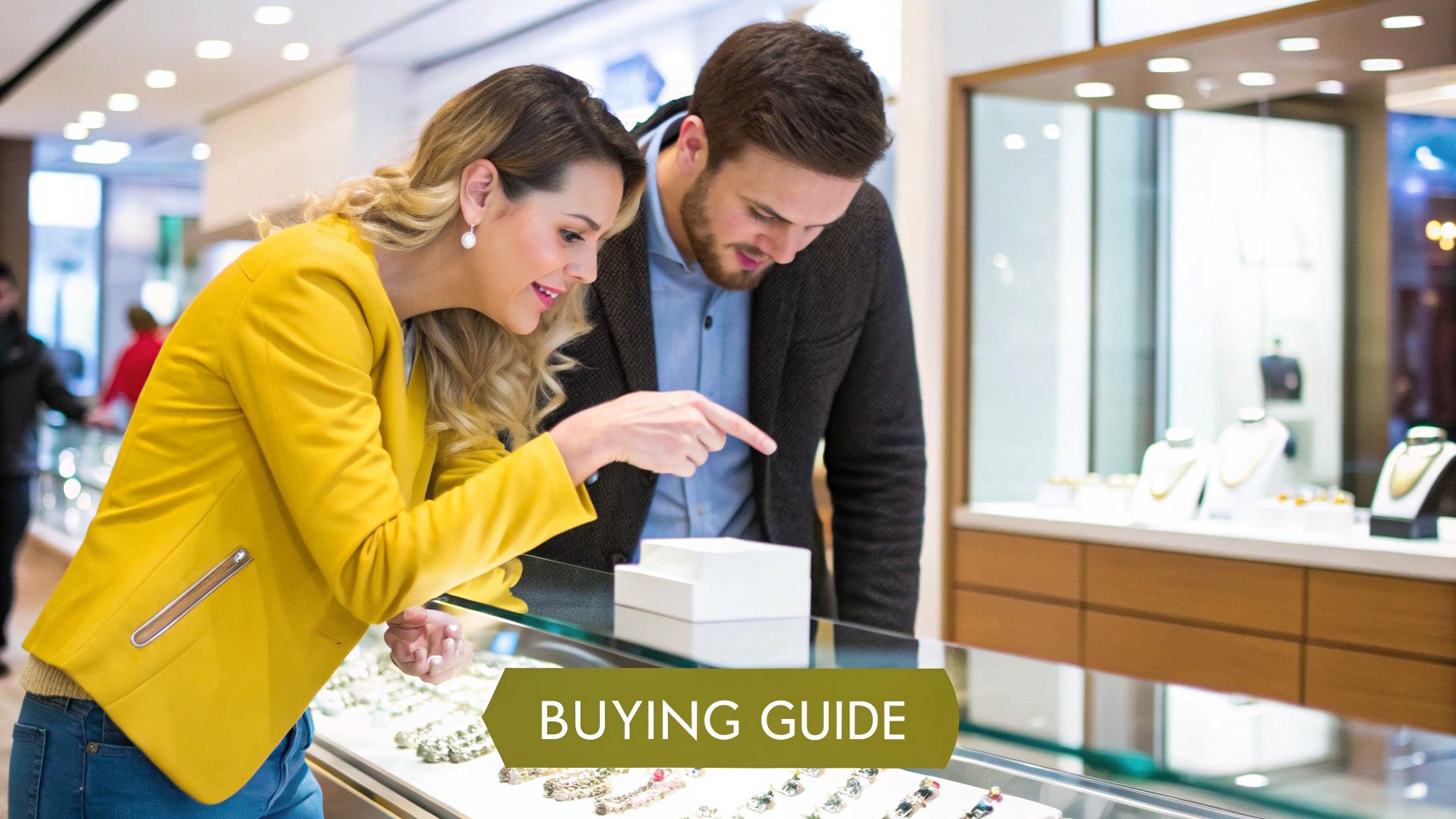
Talking about the cost of a wedding ring vs an engagement ring is a huge part of the buying process, and it’s where a lot of questions pop up. The biggest price difference really boils down to one thing: the show-stopping center stone. An engagement ring is meant to be a statement piece, so the cost of that main diamond or gemstone—plus the complex setting needed to hold it securely—naturally drives the price up.
Wedding bands, on the other hand, tend to be much more budget-friendly. Most are simpler bands of precious metal, although some feature smaller, pavé-set diamonds that add a bit of sparkle and cost. But without a large, high-value center stone, their price point almost always stays well below that of an engagement ring.
Modern and Sensible Budgeting Strategies
First things first: let's toss out that old, tired “three-month salary rule.” That’s a relic from a different era. Today’s couples are smarter, creating budgets that are personal, realistic, and in sync with their actual financial goals. The best approach is to figure out what you’re genuinely comfortable spending without getting into debt. The focus should be on what the rings mean to you, not on some arbitrary number.
The most important factor in your budget isn’t what you should spend, but what you can spend. A ring bought with financial peace of mind is always more beautiful than one that causes stress. True value is in the commitment, not the carat weight.
To make your budget work even harder for you, think about smart alternatives that give you a stunning look without the hefty price tag. For instance, exploring lab-grown diamonds can often get you a larger, higher-quality stone for the same budget you’d spend on a smaller mined one.
How to Manage Costs Effectively
The good news is you have several fantastic options for managing the cost of both rings. You can absolutely find pieces you adore while staying comfortably within your budget.
Here’s some practical advice:
- Explore Alternative Gemstones: Diamonds are timeless, but vibrant gemstones like sapphires, emeralds, or moissanite offer a unique and often more affordable option for an engagement ring’s centerpiece.
- Be Strategic with Metals: Platinum is a top-tier choice, but white gold offers an incredibly similar look at a lower cost. If you're drawn to warmer tones, our guide on why yellow gold is still a popular choice for engagement rings breaks down its classic appeal and value.
- Consider a Bridal Set: Buying your engagement ring and wedding band together as a matched set can sometimes be more cost-effective than purchasing them separately. At Precious Pulse Jewelry, our bridal sets are designed to ensure a perfect, flush fit right from the start, taking the guesswork out of matching.
At the end of the day, your budget is a personal decision. By understanding what drives the price difference between a wedding ring and an engagement ring and using these smart strategies, you can make a choice that feels both financially responsible and deeply meaningful.
How to Wear Your Wedding and Engagement Rings
So, you have both rings. Now what? A new question pops up in the wedding ring vs engagement ring debate: how do you actually wear them together? While there are no hard-and-fast rules, tradition offers a beautiful and symbolic place to start, and it’s a custom many couples still love to follow.
The most common approach is steeped in romantic history. Tradition says the wedding band goes on first, placing it closest to your heart. This custom comes from the ancient Roman belief in the vena amoris, or the "vein of love," which they believed ran directly from the fourth finger of your left hand straight to the heart. On your wedding day, you’d typically slip your engagement ring onto your right hand for the ceremony, put the wedding band on your left hand, and then slide the engagement ring back on top.
Practical Alternatives and Modern Choices
Of course, tradition isn’t your only option. Your comfort, your lifestyle, and your personal style matter just as much. Many people find that a different arrangement works better for them day-to-day.
Here are a few popular and practical ways to wear your rings:
- Move It to the Right Hand: Is your engagement ring particularly large? Or maybe it has an intricate design that just won’t sit flush against a wedding band. Wearing it on your right hand is a perfect solution. This gives each ring its own space to shine without competing.
- Wear Only the Wedding Band: For pure practicality, especially if you work in a profession that’s tough on jewelry, some people choose to wear only their wedding band for daily activities. The engagement ring can then be saved for date nights, weekends, and special occasions.
- Solder Them Together: If you love the look of a perfectly matched bridal set and want them to stay that way, a jeweler can solder your rings together. This creates a single, seamless piece of jewelry, preventing the rings from spinning around or scratching each other.
The "right" way to wear your rings is simply the way that feels most comfortable and meaningful to you. Whether you stick with tradition or create your own, the goal is to honor the commitment your rings represent.
Ultimately, how you show off these powerful symbols of your partnership is a deeply personal choice. Think about your daily routine, your comfort, and what arrangement best tells your unique love story. Whether you prefer the classic stack, separate hands, or a practical single band, the meaning behind the rings always stays the same.
Common Questions About Wedding and Engagement Rings
Even after you've explored all the details, a few practical questions almost always pop up when deciding between a wedding ring and an engagement ring. Getting clear, straightforward answers can give you the confidence you need to make a choice you’ll love forever.
Do You Need Both Rings?
The short answer is no. While it’s traditional to wear both an engagement ring and a wedding band, it is absolutely not a requirement. Many modern couples choose to simplify things, opting for a single, significant ring to symbolize their entire journey. This might be a choice driven by personal style, a hands-on profession, or budget—and the commitment it represents is just as powerful.
Can One Ring Serve As Both?
Yes, absolutely. A single ring can serve as both your engagement and wedding ring. Some people fall in love with a more elaborate wedding band, like a stunning eternity ring, and decide to wear it as their sole symbol of marriage right from the wedding day. This minimalist approach is perfect for anyone who prefers an uncluttered look or has a job where multiple rings would just get in the way.
The most meaningful ring choice is the one that feels right for your partnership. Tradition offers a beautiful guide, but your personal story should be the ultimate decider.
How Do I Find a Matching Wedding Band?
Finding a wedding band that perfectly complements your engagement ring is the key to creating that cohesive, stacked look. Many engagement rings are actually designed as part of a bridal set, which includes a perfectly matched wedding band. This is the easiest way to guarantee a perfect fit.
If your ring was bought solo, don't worry. Practical Tip: Look for styles called "contour" or "notched" bands, as they are specifically designed to sit flush against common engagement ring shapes. Don't be afraid to mix things up! A mixed-metal or stylistically different stack can look incredibly chic and uniquely you.
At Precious Pulse Jewelry, we believe finding your perfect rings should be simple and inspiring. Explore our curated collections of engagement rings and wedding bands designed to celebrate your unique love story. Find your forever rings today.
Article created using Outrank
